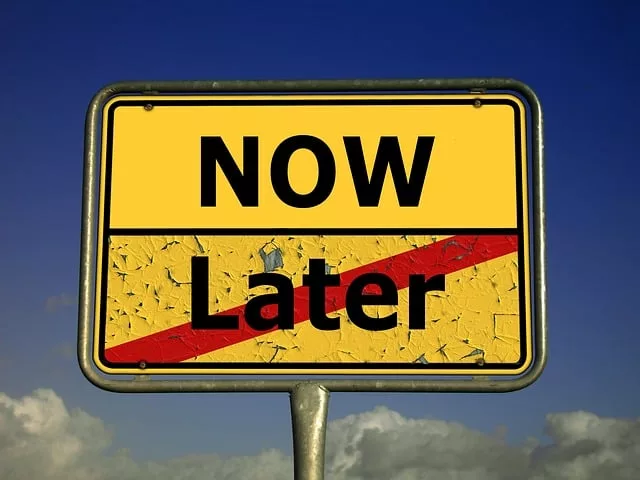In the competitive digital marketing landscape, your ability to persuade visitors to take the next step can mean the difference between a thriving business and a struggling one. Whether you’re building an email list, promoting an affiliate product, or guiding readers to consume more of your content, the humble call-to-action (CTA) holds the key. A compelling call to action serves as the bridge between interest and action. Done right, it becomes a silent salesperson, working tirelessly behind the scenes to drive conversions.
But not all CTAs are created equal. Many websites are littered with generic phrases like “Click here” or “Submit,” which fail to excite or motivate. To succeed, you need to master the art of crafting call-to-actions that not only attract attention but also convert with confidence and clarity. In this article, we’ll break down the psychology, structure, and techniques that elevate a CTA from mediocre to magnetic.
Understanding the Role of a Call-to-Action
A compelling call to action does more than prompt a click. It guides the user’s journey, aligns with their intent, and serves as a catalyst for meaningful engagement. Think of it as the signpost at a fork in the road. Without it, your visitors may wander, hesitate, or leave altogether.
In affiliate marketing, every click has the potential to lead to a commission. That’s why the placement, wording, and design of your CTAs should never be an afterthought. They must be intentionally designed to lead the reader toward a specific, desired outcome—whether it’s making a purchase, subscribing to a list, downloading a resource, or reading another article.



The Psychology Behind an Effective CTA
Great marketing taps into human psychology. The same applies to CTAs. Understanding what motivates people to act helps you craft messages that resonate. Several psychological principles drive action:
1. Clarity Reduces Cognitive Load
People are bombarded with choices online. A clear CTA removes guesswork and tells the reader exactly what happens next. When a CTA says, “Download your free guide,” it provides direction and reassurance to the reader, guiding them to take the desired action.
2. Scarcity Creates Urgency
When people believe an opportunity is limited, they’re more likely to act quickly. Phrases like “Limited-time offer” or “Only three spots left” create a sense of urgency, compelling users to click before the offer expires.
3. Reciprocity Encourages Engagement
If you offer value upfront, such as a free resource or exclusive content, people feel more inclined to reciprocate. This is why phrases like “Get your free checklist” or “Claim your bonus” tend to work well.
4. Social Proof Reinforces Trust
People are more likely to act if they see that others have taken similar actions. A CTA with a line like “Join 10,000 subscribers” or “See why others love this tool” adds reassurance and encourages compliance.
Words That Convert
Language is the foundation of every compelling call to action. The words you choose determine whether a visitor clicks or skips. Action-oriented, benefit-driven, and emotionally charged words tend to perform best.
Start with strong verbs. Words like “get,” “discover,” “learn,” “start,” “claim,” and “unlock” convey momentum and value. Follow with a clear benefit. For example:
- “Get instant access to exclusive training.”
- “Unlock your 20% discount now.”
- “Start building your dream business today.”
These phrases emphasize what the reader gains, not just what they do. That shift in perspective can significantly improve your click-through rates.
Also, avoid vague language. “Submit” or “Click here” doesn’t communicate what the reader receives or why they should care. Be specific and let the outcome shine.

Designing for Attention and Action
While words matter, visual presentation plays a significant role as well. A CTA should stand out on the page without disrupting the reading experience. To achieve that balance, consider the following:
1. Color Contrast
Use contrasting colors that make the CTA button or text pop. If your website’s color scheme is blue and gray, a bright orange or green button may naturally stand out. Avoid using colors that blend in too closely with the background.
2. Size and Placement
Ensure the CTA is visible and not obscured by surrounding text paragraphs. Ideally, you should position your CTA “above the fold” and repeat it further down the page. Consider placing a prominent CTA at the end of blog posts, in sidebars, or even as a sticky button on mobile devices.
3. Whitespace and Simplicity
Don’t crowd the CTA with too many elements. Whitespace helps draw attention to the action and creates a feeling of clarity. A clean layout with minimal distractions often leads to better performance.
4. Button vs. Text Links
In most cases, buttons outperform text links. They grab attention and signal interactivity. However, in some content-heavy settings, a text-based CTA may feel more natural and less salesy. Test both to see what resonates with your audience.
Aligning the CTA With the Customer Journey
A compelling call to action must meet the reader where they are. Someone discovering your brand for the first time might not be ready to buy, but could be willing to subscribe or read more. Meanwhile, a warm lead who’s visited multiple pages might be prepared for a trial or purchase.
Mapping your CTAs to different stages of the funnel ensures that you offer relevant next steps for each stage of the funnel. Here’s how to approach it:
Top of Funnel (Awareness)
- “Download your free guide.”
- “Read our latest post.”
- “Watch the demo video.”
Middle of Funnel (Consideration)
- “Compare our features.”
- “Join the email list for exclusive tips.”
- “See real customer results”
Bottom of Funnel (Decision)
- “Start your free trial.”
- “Get 20% off today only.”
- “Buy now and save.”
By understanding your audience’s mindset, you can tailor your call to action to feel like a natural progression rather than a hard sell.
Storytelling That Leads to Action
One powerful way to frame your CTA is through storytelling. Instead of jumping straight into a pitch, engage your audience with a story that highlights a problem, introduces a journey, and ends with a solution.
For instance, instead of saying:
“Click here to learn affiliate marketing.”
Try something like:
“When I started affiliate marketing, I struggled to earn even a few dollars a month. Then I discovered a proven system that changed everything. Today, I generate passive income while working fewer hours. Want to see how I did it? Start your journey here.”
This approach taps into empathy, builds credibility, and makes the CTA feel like a natural next step in the reader’s own story.
The Power of Personalization
Generic CTAs can be effective, but personalized ones are even more powerful. Addressing your audience directly helps create a connection and enhances the likelihood of engagement.
Instead of “Sign up for the newsletter,” try:
- “Yes, I want weekly affiliate tips.”
- “Show me how to make passive income.”
- “Send me my free tool.”
These phrases shift the focus onto the reader’s desires and create a sense of ownership. You’re not just offering information—you’re offering their solution.
Personalization can also extend to behavior-based call-to-action (CTA) buttons. If someone has visited a product page multiple times, you can display a tailored offer such as “Take 10% off—just for you.” Tools like heatmaps and behavior tracking can help optimize this strategy.

A/B Testing for Continuous Improvement
Even the most compelling call to action can benefit from testing. A/B testing, also known as split testing, allows you to compare two or more versions of a call-to-action (CTA) to determine which performs better.
Test elements such as:
- Button color
- CTA text
- Position on the page
- Length of supporting copy
- Use of urgency or scarcity language
Minor adjustments can lead to significant improvements. For example, changing “Start your free trial” to “Get started risk-free” might increase conversions if the latter better addresses the reader’s hesitation. The key is to test one variable at a time and give the test enough time to collect reliable data.
CTAs Across Different Platforms
Your call to action should adapt based on where your audience encounters it. A blog post, landing page, email, social media caption, or YouTube description each requires a different tone and structure. While the principles remain consistent, the format should vary to suit the channel.
On Blog Posts:
CTAs here should offer value and align with the topic at hand. Think of it as an extension of the content. A CTA on a post about keyword research might say, “Download my free SEO checklist.”
In Emails:
Emails are personal. Use language that reflects a conversation. For instance, “Tap the button below to claim your bonus” feels warmer than “Click here.”
On Social Media:
Keep CTAs short, bold, and action-packed. Social media users scroll quickly, so phrases like “Watch now,” “Try free,” or “Get yours” can capture attention quickly.
On Video or Audio:
You often can’t rely solely on clickable elements. Voice your CTA, repeat it at the end, and display it on-screen if possible. Reinforce what the viewer gains from taking action.
Avoiding Common Pitfalls
Many marketers unintentionally undermine their CTAs. Watch out for these common mistakes:
- Too many CTAs on a single page can create confusion and dilute focus. Prioritize a single primary CTA.
- Misleading language: Don’t promise something you can’t deliver. This damages trust and increases bounce rates.
- Poor timing: Presenting a CTA too early, before the reader has context, can feel pushy. Let your content warm them up first.
- Cluttered design: A messy or hard-to-find CTA defeats its purpose. Keep it prominent and visually clear.
Focus on the user experience. A CTA should feel like a helping hand, not a sales trap.
Evolving Your CTA Strategy Over Time
Crafting a compelling call to action is not a one-time task; it requires ongoing attention and refinement to ensure its effectiveness. Markets shift. Audiences evolve. Technologies change. The CTAs that work today might underperform tomorrow. Make testing, learning, and iterating part of your routine.
Review your analytics regularly. Track click-through rates, bounce rates, and conversion percentages. Look for patterns. If certain CTAs consistently outperform others, try to replicate their style across your content. If some underperform, don’t be afraid to pivot.
Also, stay current with user behavior trends. As mobile usage increases, ensure your CTAs are thumb-friendly. As privacy regulations evolve, offer CTAs that build trust and emphasize data protection.
Your CTA strategy should evolve in tandem with your audience. Keep refining, stay human, and focus on providing clear value. When done right, a compelling call to action can transform your content from passive information to active engagement.
By mastering the subtle yet powerful techniques behind effective CTAs, you position your content—and your business—for long-term success. You don’t just tell your audience what to do next. You invite them on a journey where action feels easy, beneficial, and rewarding.


This was such a great read! CTAs are one of those things that seem simple but actually take a lot of thought to get right. I loved how you broke down the psychology behind what makes a call to action compelling. It really made me think about how much wording and timing matter. Do you have any favorite examples of CTAs that totally nailed it, or ones you’ve tested that surprised you with how well (or poorly) they performed? Would love to hear more about the trial and error side of things!
Thank you so much—I’m really glad you enjoyed the post! You’re absolutely right—CTAs might look simple, but there’s a whole lot of psychology and strategy behind the ones that really convert. It’s always fascinating how just a small change in wording or placement can make a big difference!
Great question, too! One of my favorite CTAs that’s worked surprisingly well is something as simple as: “Get the exact steps I used—no fluff.” It plays on curiosity and gives a sense of value without sounding pushy. On the flip side, I once tested a CTA that said “Click here for more info,” and it totally flopped—too vague and didn’t create enough urgency or benefit.
Trial and error is 100% part of the process, and I’ve found that A/B testing even just two versions of a CTA can reveal a lot. I’ll definitely be sharing more examples in a future post!
Thanks again for your awesome comment—really appreciate you joining the conversation!